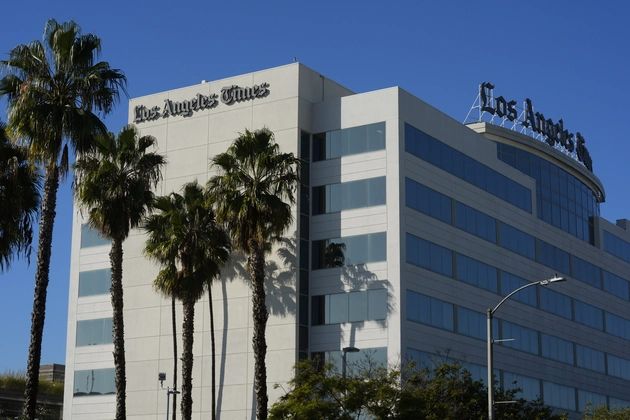Billionaire Plans Bold Move to Take LA Times Public Giving Power Back to the People
A New Chapter for the Iconic Los Angeles Times
In a transformative decision that could reshape the future of American journalism, billionaire entrepreneur Patrick Soon-Shiong has announced plans to take the Los Angeles Times public within the next year. This move signals a rare and symbolic gesture to shift ownership of one of the most historic newspapers in the United States into the hands of the people, aiming to rebuild public trust in media during a critical time for the nation.
Soon-Shiong, who has owned the LA Times since 2018, made his intentions clear during a recent interview, emphasizing that public ownership could help “democratize” the institution and restore faith in objective reporting. His goal? To create a media platform that truly belongs to the public, free from partisan influence or private control.
From Private Wealth to Public Voice
Patrick Soon-Shiong, a South African-born medical entrepreneur and billionaire best known for his groundbreaking work in pharmaceuticals and cancer research, acquired the Los Angeles Times in a $500 million deal through his investment firm, Nant Capital. At the time, the newspaper was facing turmoil — internal conflicts with its previous owners, declining morale, and financial uncertainty.
Since taking control, Soon-Shiong has steered the publication through turbulent waters, aiming to modernize its operations and editorial direction. The decision to move toward a public offering marks a significant shift — not just in ownership, but in philosophy.
“Unless you have truth and trust, we’re not going to have healing in this country,” Soon-Shiong said, highlighting the urgent need for credible journalism in a polarized society.
Why This Matters Now
This decision comes at a pivotal time when traditional media outlets are struggling to maintain revenue and relevance. Digital platforms have eroded advertising income, and skepticism around news accuracy has become widespread.
By proposing a public offering, Soon-Shiong is not only inviting financial investors — he’s inviting citizens to become stakeholders in the very machinery of journalism.
The move could elevate the LA Times to a new tier of public media ownership, joining the ranks of prominent outlets that have gone public in the past, while possibly introducing a more community-focused model of media governance.
A Complex Road Ahead
Despite the enthusiasm behind the vision, the road to becoming a public company is not without hurdles. Soon-Shiong has not disclosed specific financial structures, valuation goals, or IPO timelines beyond a vague “next year” projection. Industry insiders believe a detailed plan will likely surface in the coming months, as internal preparations begin and regulatory steps are initiated.
Moreover, the LA Times has not been immune to the challenges plaguing legacy media. It has faced declining subscriptions, shrinking ad revenue, and staff resignations over editorial decisions — including Soon-Shiong’s controversial move to block a presidential endorsement in the 2024 U.S. election, which some saw as a blow to editorial independence.
Restoring Trust in an Era of Division
What sets this announcement apart is the deeper mission Soon-Shiong appears to be embracing: restoring public trust in journalism by inviting the very public it serves to take part in its future. In an age when media bias and misinformation are under constant scrutiny, offering public equity in a historic news outlet could be a symbolic and strategic answer to growing disillusionment.
If successful, this initiative could inspire other media owners to explore alternative ownership models that are more transparent, participatory, and rooted in civic engagement rather than private gain.
The Future of the LA Times Is in the Public’s Hands
As the Los Angeles Times prepares for what could be its most significant transformation in decades, the next steps will be closely watched by journalists, investors, and citizens alike. For Soon-Shiong, this is more than a business decision — it’s a legacy move, aiming to redefine how journalism is funded, owned, and trusted in the 21st century.
Whether this bold shift will succeed in reshaping the relationship between media and the public remains to be seen. But one thing is clear: the story of the LA Times is about to turn a new page — one potentially authored by the very people it serves.
